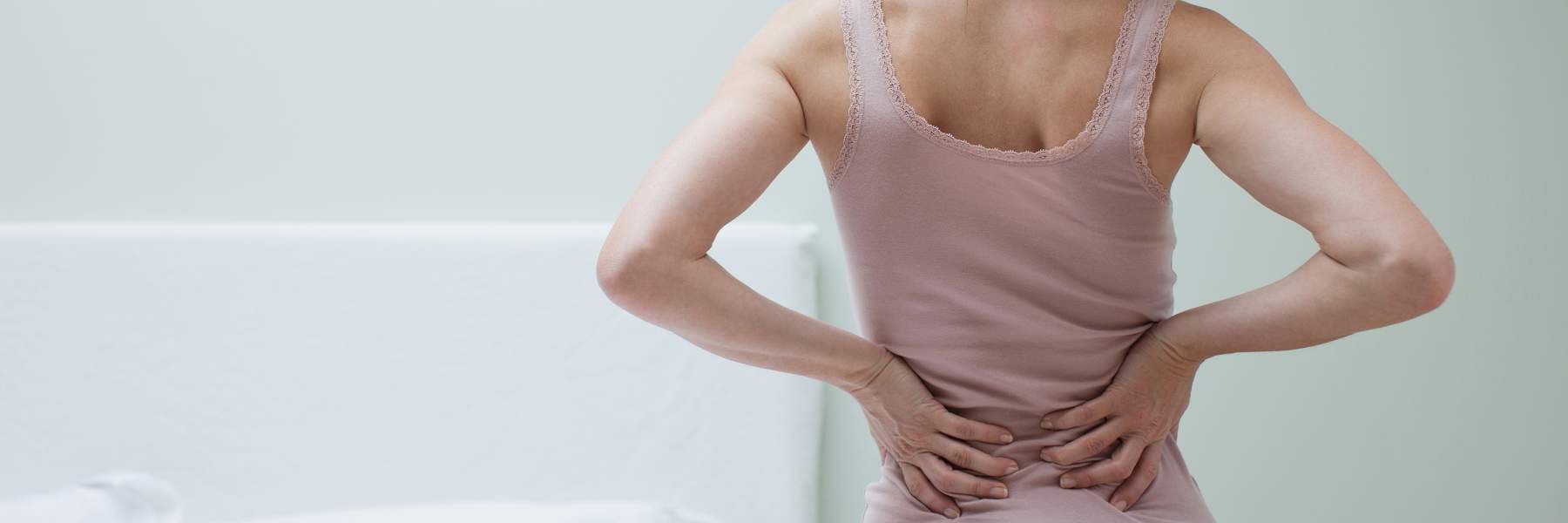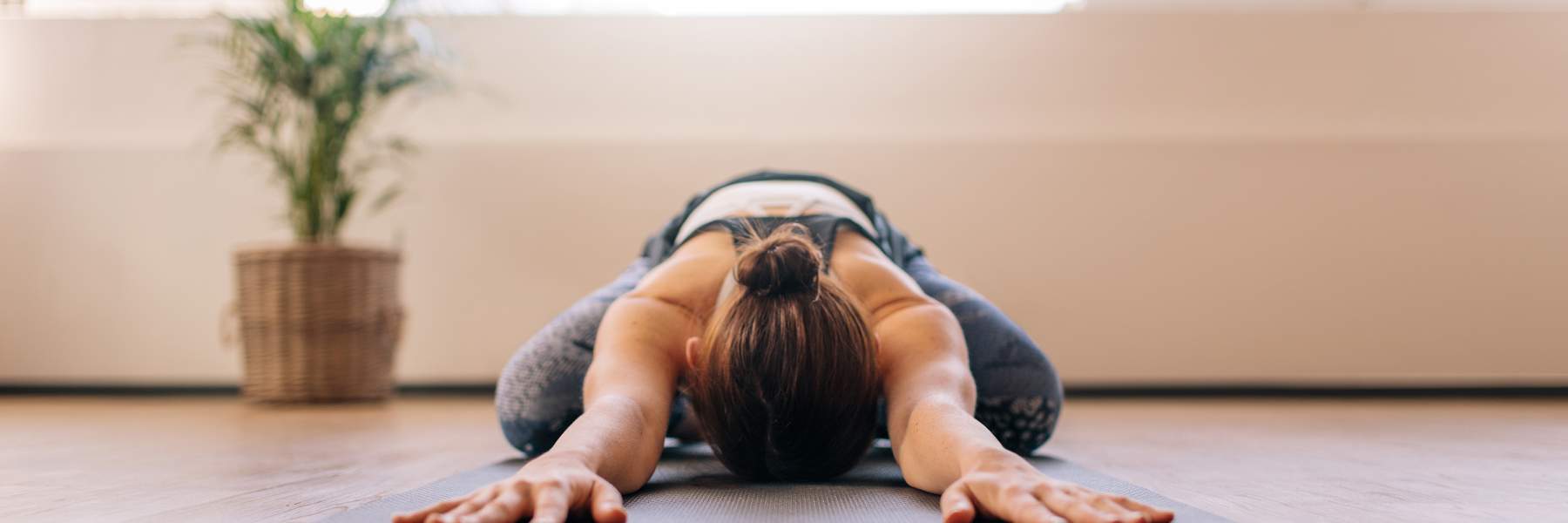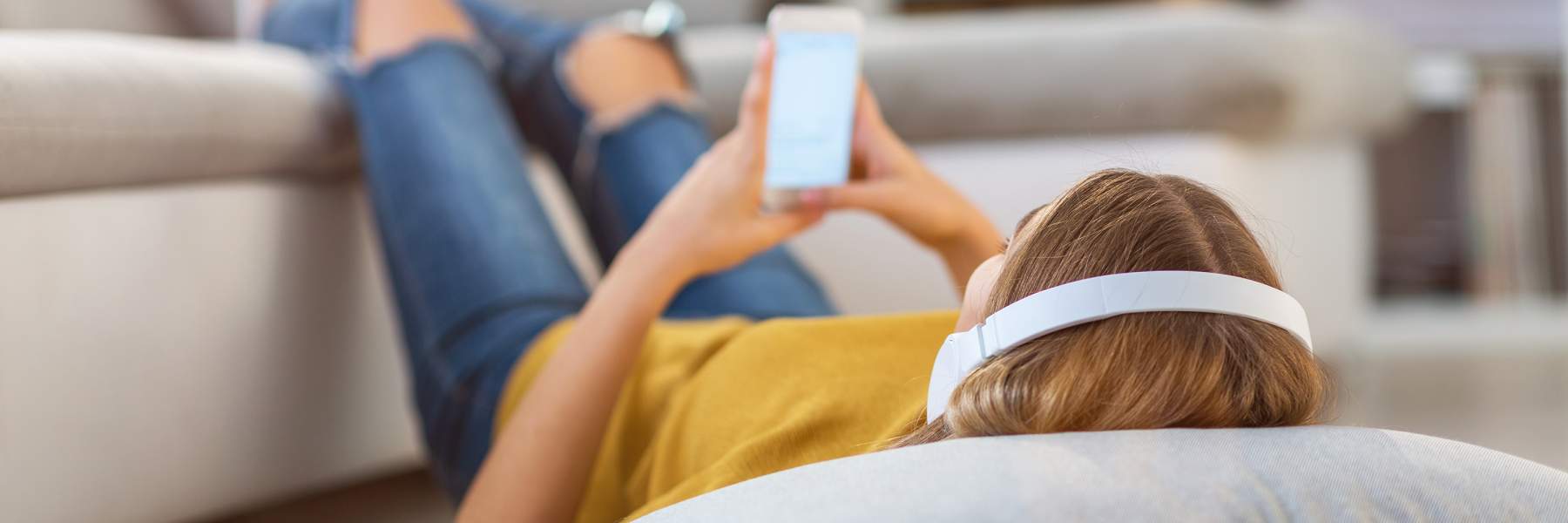Low back pain is one of the most commonly experienced symptoms in people with endometriosis. This is because the nerves that supply the uterus come from the same part of the nervous system as the nerves supplying the back, which means that these two body systems can ‘communicate’ or ‘talk’ with each other. When the uterus is sensitised, this can ‘prime’ the back, resulting in referred aching, niggling, gnawing pain. If the pain is severe, it may mean you don’t want to move as much, and can impact your mood, energy, and ability to think.
The opposite is true too: when you also have back pain as a separate pain condition, it can ‘prime’ the uterus, bowel and bladder, amplifying your pain experience during your periods. This is commonly the case for people living with endometriosis. Other pain conditions like fibromyalgia and irritable bowel syndrome can also ‘prime’ the system. What’s important here is to work with your health team to develop a holistic care plan that is right for you and that addresses your specific care needs.

If you only experience back pain during your period
If low back pain is only present during or around your period, it is more than likely to be referred pain coming from sensitised uterine tissues, and possibly also bowel and bladder for those with endometriosis.
Below are some simple and effective care components that can be combined into a holistic care package tailored to your needs and addressing your endo-related back pain:
- Learn about your back pain: understanding the pattern and triggers for back pain helps to put you in the driver’s seat and learn ways to pre-empt and more effectively manage your back pain.
- Simple medicines (paracetamol and nonsteroidal anti-inflammatories). If you have severe pain, talk with your doctor as they may suggest use of different medicines that can offer better pain control or medicines that target hormones associated with endometriosis.
- Keep moving: often gentle regular movement (such as yoga, tai chi, walking, or a stationary exercise bike at home) can help ease pain around period times. Ideally this is something manageable for you, that you enjoy, and that is cheap and easy to do. Do little bits often. This can make back pain more manageable and offer pain relief.
- Meditation and relaxation can take your mind off pain, reduce stress, calm your system down, and help you to cope with pain and improve your mood.
- Nutrition is important too: some people find that eliminating certain foods from their diet can help calm the gut, bowel and bladder. A dietician or nutritionist can help you to monitor your diet while ensuring that you receive excellent nutrition.
- Lifestyle factors: It’s good to pull back on habits like excessive use of alcohol and smoking along with increasing healthier activities. Excessive alcohol and smoking can contribute to sensitising already ‘primed’ tissues, such as the back, uterus, bladder, bowel and gut and set you up for harder to manage pain.
- Sleep: Everyone needs quality sleep to be able to function, and pain can get in the way of sleep. The above strategies to stay moving, simple analgesia, meditation and relaxation, good nutrition and lifestyle factors, can also help you improve your sleep. Getting quality sleep helps reduce tissue sensitivity, improve energy and mood, and may help improve your back pain.

What if I experience persisting low back pain as a separate condition, outside of period pain?
Some people may experience persisting low back pain as a condition in addition to living with endometriosis. This back pain may have started before endometriosis, possibly as the result of an accident or injury, or may have started as a gradual problem that has persisted and gets worse during periods. This is referred to as chronic low back pain.
Having chronic low back pain can increase the likelihood of experiencing moderate to severe period pain, especially for people with endometriosis. While this is not always the case, it is common. Having endometriosis increases the pain experience for those with chronic back pain: this is the ‘priming’ we described above. The two body systems ‘talk’ to each other and can amplify pain. The good news is that you can manage back pain well and many people can recover.
What do I need to know if I have persisting low back pain and endometriosis?
What’s important here is to work with your healthcare team to develop a holistic care plan that is right for you and that addresses your individual chronic low back pain triggers and care needs, while factoring in your endometriosis.
A skilled healthcare team should work with you to take a biological (consider all your body systems and what pain conditions you have and the condition severity), psychological (your emotional functioning, coping and resilience) and social (relationships and networks) approach to understanding your pain. All these factors combine to influence your unique pain experience and many of these factors are modifiable.
- Around 80% of people experience back pain in their lifetime, but it is rarely life threatening.
- For 10-30% of people, back pain can be very distressing, interfering with daily activities, their ability to remain active, and negatively affecting their quality of life. This can also impact on those caring for the sufferer – usually family and friends.
Many of these factors can be addressed with good support from your health team and your social network. Seeking care is important when you are experiencing persisting low back pain as well as endometriosis. Low back pain that persists may need more targeted care.
For 10-30% of people, back pain can be very distressing, interfering with daily activities
Common myths about back pain
According to the painHEALTH website, there are many common and unhelpful myths about chronic back pain like:
- Back pain is caused by wear and tear, discs popping out, damage or the joint being ‘out’ of place
- The back wears out from lifting or heavy physical activity
- It is dangerous to exercise, bend or lift with back pain
- There is nothing you can do for back pain as we get older
- Back pain can put you in a wheel chair
Here are the facts about back pain
For these myths, the opposite is true:
- Backs are really strong structures and they don’t go ‘out’ of place
- Back pain is rarely associated with serious tissue damage
- Good sleep, healthy diet and regular movement and exercise help back pain
- Backs get healthier and stronger with exercise and movement - too much rest is unhelpful
- Back pain can be effectively managed at any age
- People with back pain do not end up in a wheel chair
Backs get healthier and stronger with exercise and movement - too much rest is unhelpful
How should I care for my chronic low back pain?
The good news is that the pain care guidance outlined above also applies to chronic low back pain care. You can use the same approaches to help put you in control of your back.
Sometimes, chronic back pain is more complex and you may need the help of an expert clinician who can help you make sense of your pain and shape a care plan that helps you achieve better pain management and move you back towards things you enjoy. This might include learning news ways to move, feel safe when moving, re-engage socially, learn to pace activity (not too little or too much), to improve your strength and conditioning so that you can do the things that matter most.
You can check out the detailed care guidance for low back pain on painHEALTH. You can also read some of the pain stories that outline how people with chronic low back pain have improved with good guidance. Check out Megan’s story. You might like to check out these fact sheets: 15 things you didn’t know about back pain and Managing Back Pain.

 Skip to main content
Skip to main content